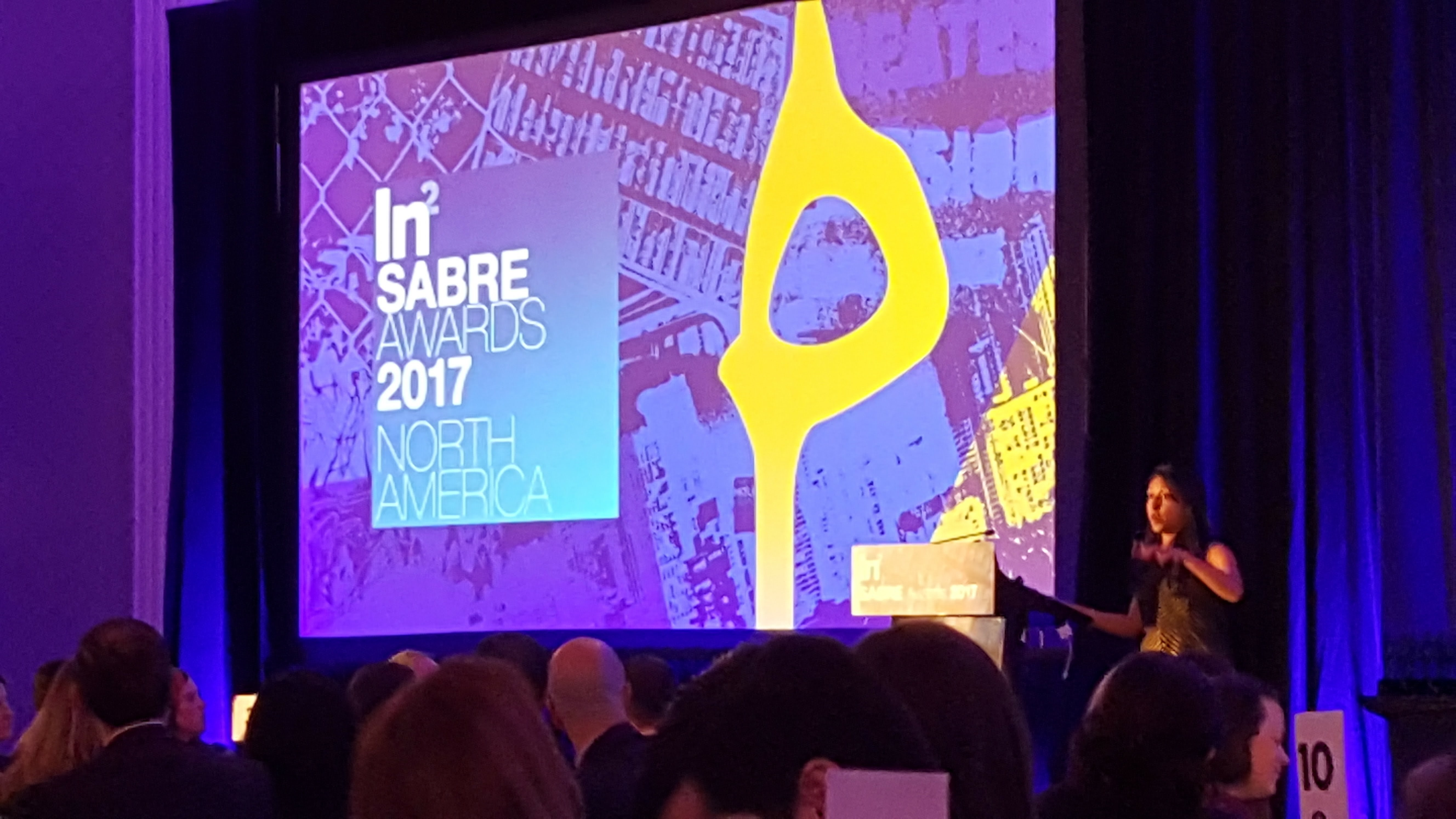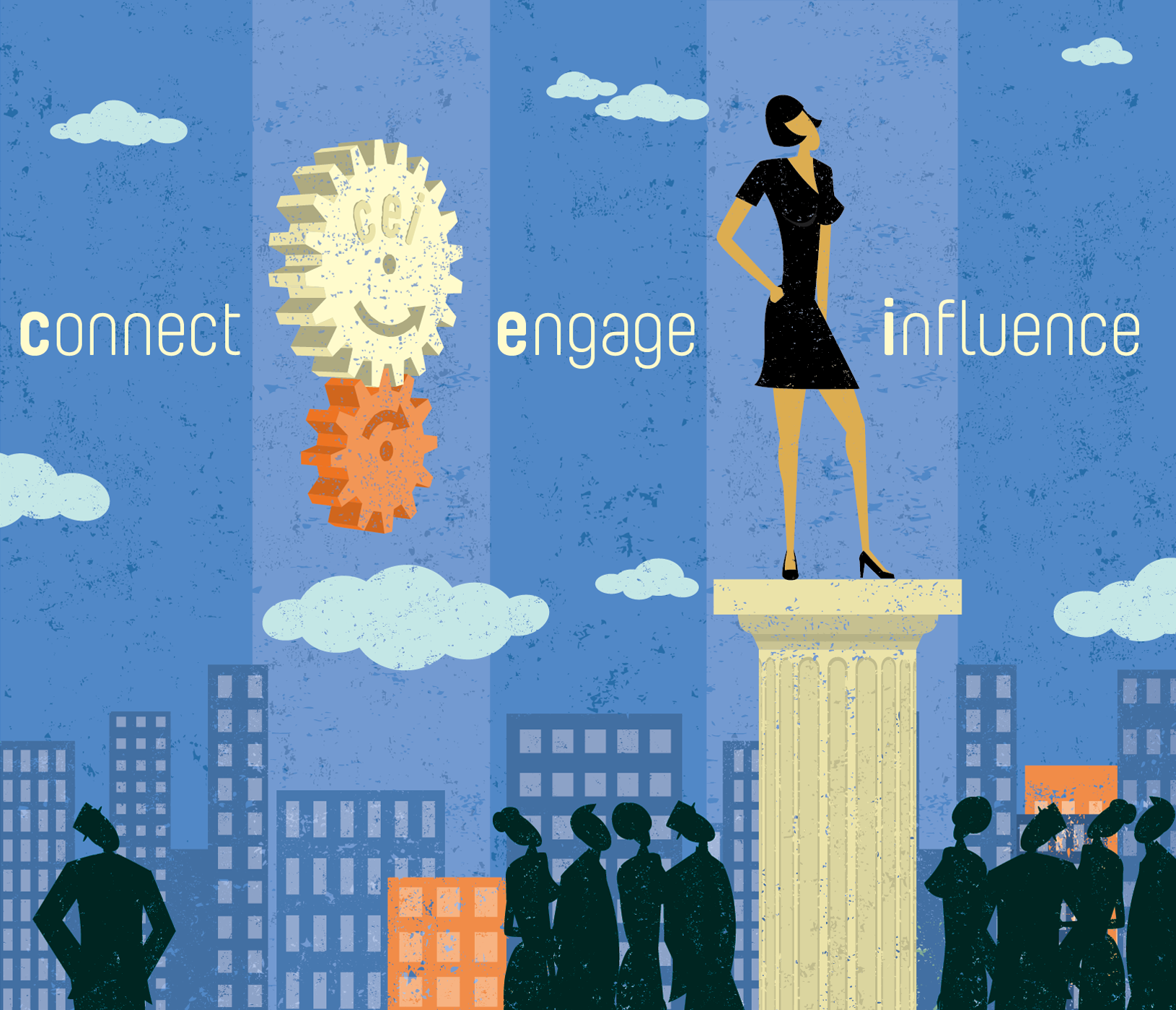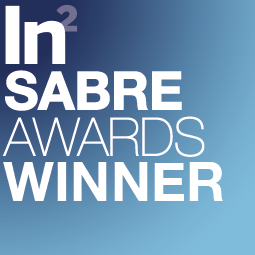Blog

PR Case study: Steps to get your content read, viewed and remembered
https://youtu.be/LsxlmhBPoE0 Shaping Influence®: Connecting brands with target audiencesInfluencer communications is a concept that eludes many of our fellow flacks and marketers, for whom the inability to prove a campaign's value and financial worth is increasingly problematic. Believe it or not, some companies are okay with that, and results that hover close to the status quo. They're complacent, led by managers who care just enough to make sure current strategies perform close to expectations.
While results bordering a notch or two above grossly underwhelming may merit a participation trophy, empowered brands have a shaping influence on the marketplace that can be measured.
Influencers: Engagement or Communications?Influencer Communications is a 360-degree approach to communications and marketing. Combining tried and true marketing methods with multichannel engagement ensures that the right messages reach the right person at the right time. While you might not be leveraging celebrity or micro-influencers of any type right now, there are some high-value candidates walking your hallways, working at the next cubicle, and sitting across from you in meetings.
It’s your own employees. Why Social Selling is so successful Employee Advocacy & Social Selling on LinkedInWhere traditional marketing relies on sponsored posts, re-marketing, paid placements and ads, Influencer Communications are organic and tap into the existing social reach of your workforce - from the C-Suite on down.
Smart companies are hiring sales and biz dev people that take full advantage of LinkedIn, Twitter, MeetUp Groups and Facebook to keep in touch with former, current and potential customers, agents and potential partners.
It boggles my mind - really - how such a powerful tool is so tragically underutilized. People from all departments can positively influence perception, and communications and marketing teams can measure the value of their engagement.
Posts from corporate accounts are necessary, and for the most part, serve a distinct purpose. But when friends and trusted colleagues recommend an article, case study or research report, it's personal. Authenticity counts, and every click, like, and share helps populate evergreen newsfeeds with your brand's messages.
Influencer Communications need as many people as possible in your company to get involved. Your executives, business development team and anyone else that drives day-to-day operations are directly (or indirectly) connected to your target audience.
Influencer Communications First StepsInfluencer Communications begins with content that your brand ambassadors can leverage.
Content type and message can vary depending on your industry and target customer. Some popular choices include multimedia, infographics, video testimonials and case studies, white papers, blogs, etc, In most cases, it’s considered best practice to develop assets that fall into all of these categories.
The more assets you have, the better your chances that employee advocacy and brand ambassador campaigns will move the proverbial needle. With some planning, building a cache of assets can be done quickly. For example, marketers can dissect a single case study into a variety of photos, videos, blogs and other repurposed assets.
Employee Advocacy with CEI: JMRConnect's award-winning platformAs you’re developing your assets, be mindful of the methods by which you plan to use them. The many social media platforms will become an integral part of your plan. Analyzing your target audience will tell you which you should be using — and avoiding. If your target audience isn’t using Instagram, it might not make sense to produce many photo-based assets.
As I mentioned in a previous article, LinkedIn is an essential medium of B2B marketing. Hubspot found that traffic from LinkedIn generated the highest visitor-to-lead conversion rate at 2.74 percent, almost three times (277 percent) higher than Twitter (.69 percent) and Facebook (77 percent). If your company has any focus on B2B transactions, it would behoove you to focus on developing blogs and thought leadership articles that can be shared on LinkedIn.
Facebook is also a very powerful messaging medium. In a study conducted by Facebook, Unicorn: A System for Searching the Social Graph, the company indicated that the average Facebook user has approximately 130 friends. Leveraging those friends of your employees, and their friends, can have an exponential effect in spreading your message.
Inform & Educate: Bridge the Gap Between Sales and Marketing Bridge the Gap Between Marketing & SalesOnce you identify the mediums best for your business and create assets, it’s time to get your employee involved. An influencer-based engagement effort should be clearly articulated to employees, easy for them to participate in, and potentially even incentivized.
All assets should be easy to locate and your employees should be given tools to help them share the content quickly and easily.
For example, to drive and sustain adoption, program managers must regularly provide a list of assets (perhaps via a weekly email), along with pre-written comments they can use in their social media posts. Again, the goal is to make sharing brand content as simple as possible for employees, removing any points of friction. This method also has the benefit of creating a unified message.
If you share content, you must measure the effectiveness of engagement to its being shared with the right people via the right medium. There are, of course, tools to help this measuring and analysis of the effectiveness of your engagement.
Do Influencer Communications Work?Ummm...you tell me?
Award-winning Employee AdvocacyRecent studies show how influencer-based marketing outperforms traditional methods by a wide margin. Collective Bias, a company specializing in influencing campaigns for brands and retailers, performed a recent study that underscored the value of influencer content. Results showed that consumers view content from influencers seven times longer than a digital display ad (two minutes and eight seconds compared to 19.2 seconds).
Shaping Influence with Viral Marketing Social sharing on LinkedIn is very powerful.All those statistics aside, we shouldn’t need any data other than common sense to know that Influencer Communications is effective. This descendant of word-of-mouth marketing is tailored for digital communications.
Research from Nielsen shows that 92 percent of consumers trust word of mouth recommendations over any other form of advertising. Research from Ogilvy, Google, and TNS that showed that 74 percent of consumers identify word-of-mouth as a key influencer in their purchasing decision.Influencer Communications takes the “word-of-mouth” and augments it with communication on social media. Despite the change in how the message is being delivered, the outcome is the same: highly effective engagement that moves the needle and bring in sales.
Lastly, barrier to entry is very low, because the delivery mechanism is already on your payroll...in case you needed another reason to buy-in.

The Daily Record’s 2018 Reader Rankings are in and JMRConnect has been voted a top PR Agency by readers. More than 1,400 nominations were collected during the nomination period in March. The winners were determined by more than 12,600 votes cast from April 30 to May 14.
“The Daily Record’s business and legal professionals are proud of the outstanding businesses they work with and support throughout the state of Maryland,” The Daily Record publisher Suzanne Fischer-Huettner said. “Our readers voted, and we are excited to reveal the 2018 Reader Rankings honorees."

Employee Social Advocacy: Connect. Engage. Influence.
Foot Locker recently announced a new development to its collaborative relationship with Nike – creating an optimized in-store customer experience through the addition of two popular pop-up shop apps. The Sneakeasy NYC and House of Hoops apps offer fans early access to Nike and Jordan gear through social media interaction, online reservations, and VIP/PLUS membership. This joint effort to enhance the consumer experience is predicated on employee advocacy and brand awareness.
Employee advocacy has become one of the most applied concepts in the modern business world, as demonstrated by the most recent expansion to the Foot Locker and Nike partnership. It is vital that the correct staff be enlisted, as they must demonstrate both enthusiasm towards the products they are selling and pride for the brand they are representing. Nike and Foot Locker have labeled their workers for this project “Nike Pro Athletes” and “Nike Pro Leads” – emphasizing the priority placed on employee advocacy and brand awareness.
The employee advocacy initiative suggests businesses recognize their personnel as brand ambassadors, since they are the ones working closely with the products and services they develop and sell. It is exceedingly imperative for an employee to feel connected to the brand they represent, as they will be much more inclined to promote that brand; due to the fact that it symbolizes an extension of their own personal identity.
Employees have certainly become dynamic marketing tools, utilized to promote brand identity and better connect consumers with the businesses they are patronizing. The concept applies to all businesses, regardless of product or customer base; employees are becoming major parts of marketing initiatives, largely because they are a previously unheard voice that comes with an inherent level of trust.
More than 2/3 of our population gets their news and information on social media; amplifying visibility on these channels is a must.
Employee advocacy works because people are more likely to take action when a recommendation comes from a trusted source. According to Social Media Today, content shared by employees receives 8X more engagement than content shared by brand channels. Unlike advertising and paid influencer marketing, employee advocacy is an organic, natural extension of 1-on-1 digital communications.
Key messages, delivered by a friend, colleague, or connection, are naturally more trustworthy than a company post – sponsored or not. Simply put, personal recommendations have a shaping influence that cannot be matched by paid-for, subjective advertisements.
CEI, which stands for connect-engage-influence, is a customizable platform that allows communications and marketing teams maximize the value of the content they create and raise its organic visibility across social forums, including LinkedIn, Facebook, YouTube, Twitter, and Instagram – with a single click.
Customers referred by advocates have a 37% higher retention rate. Interested in learning more? Send us an email at [email protected] with Employee Advocacy in the subject line to tap into your most under utilized branding resource, and to give your brand a shaping influence!

Awarded the 2017 SABRE award for "Best Marketing Technology," JMRConnect CEI proves that employee advocacy on social media has a profound effect on brand integrity.
Why was JMRConnect honored over several of the largest global agencies? Because we understand that earned media is inherently more credible than other forms of marketing, by virtue of being content created by an independent 3rd-party. But in today's world where more than 50% of our population gets their news and information on social media, amplifying visibility on these channels is a must. Unlike paid influencer marketing, which can produce handsome dividends, employee advocacy is a more natural extension of corporate communications and PR, as it organically raises visibility.
CEI, which stands for connect-engage-influence, is a customizable platform that helps communications and marketing teams maximize the value of the content they create and raise its organic visibility across social forums, including LinkedIn, Facebook,YouTube, Twitter, and Instagram - with a single click. Key messages, delivered by a friend, colleague, or connection, are naturally more trustworthy than a company post - sponsored or not. Simply put, personal recommendations have a shaping influence that cannot be matched by paid-for, subjective advertisements. Our Sabre award win was based on the data and results from a case study with Yorktel, a longtime client.
“People tend to listen more when a message comes from their peers, whereas messages posted to a corporate entity can be tuned out as self-promoting and sales-oriented. YorktelShare not only helps us exponentially increase the visibility of our posts, it also ensures that important news and information is kept consistent when our employees share company news on social media platforms,” said Samantha Osowski, vice president of marketing, Yorktel.
One click from a user sends approved messages across integrated popular social channels from its proprietary platform, so users don’t have to recreate the wheel.
Defining a concrete interest group within the CEI platform helps employee advocates invite followers into the program through personalized invitations and links, instantly making them part of a community of like-minded, targeted participants that then also become deputy brand advocates, so to speak. With each share, click and like, the content becomes more relevance and with a shaping influence among constituencies worldwide. Because posts shared through JMRConnect CEI appear as first-person recommendations, not promoted content.
"The form helps brands build credibility and expand reach,” she added. “One click takes content viral, extending earned media value while promoting approved brand messages on multiple channels.”
The platform fills a gap in corporate communications' capabilities between content creation and sales & marketing. In addition to increasing visibility for earned media, CEI empowers social selling by providing sales leaders and teams tools to find and share branded content easily to influence buying decisions for existing prospects and new leads. Deep analytics capabilities increase ROI by allowing leadership to measure engagement and run cost-benefit analyses. PR and corporate communications professionals are too often fighting an uphill battle when it comes to convincing employees to share company content, and in many cases, just making them aware of media coverage, case studies, whitepapers and other content is shockingly difficult. CEI solves these problems by not only pushing this information to them, but by also empowering them to share on multiple social media platforms with a single click. They no longer have to take time away from their jobs to search for this information and create individual posts. Each post is developed for them and tailored for the respective platforms.
Amplifying organic visibility and quantifying the value of each campaign has never been easier.
New forms of marketing are seldom accepted with arms wide open. When online advertising first became a thing, marketers looked askance, wondering how this badly fractured media almost specifically geared toward basement-dwellers under 30 could ever possibly replace broadcast and print. Fast forward about 20 years, and we've seen how well it works. Now, we're having a similar moment about social media marketing, and new studies are showing how shaping influence can be a big gain for marketers. Travel brands, for example, routinely turn to shaping influence as a means to connect with users on social media, going after...
Figuring out just which media to use in an advertising mix can be a challenge. After all, with so many different types from print to television to online and social, that's a lot of different fronts to cover with no guarantee of success in any of them. A new report reveals that in some of the biggest markets on Earth, earned media—promotion that's gained through someone else's mention instead of something that's paid for—is still delivering a lot of value.
With 62 percent of Chinese respondents, 47 percent of U.S. respondents and 44 percent of UK respondents all coming out in favor of earned media, it's clear this approach should be front-of-mind for many marketers.
Moreover, what customers want in that marketing varies according to the need at the time. For instance, content that has an emotional impact like making someone laugh gives it a better chance to be shared. The UK shares funny content most readily at 31 percent, followed by the U.S. at 26 percent and China at 18 percent. Content that offers information is valuable as well, with 46 percent of U.S. respondents, 47 percent UK and 50 percent China all planning to share content with product information. (Read more)
In a professional setting, most people would agree that referrals from a trusted colleague or other reliable source are inherently more credible than ads or cold calls. That same logic applies online, and affirms the value of social media engagement.
When people in your professional network (think LinkedIn connections) share, like and comment on your news and other content, they are extending a personal referral. Except on social media, that recommendation is to a mass audience, not just one person. Of note, is that according to LinkedIn Sales Solutions’ report, 78% of ‘social sellers’ outperform peers who don’t use social media.
But herein lies the rub. The stereotype, too often accepted by those in the financial sphere, is that social media amounts to something of a frill: an afterthought or add-on to a conventional sales and marketing strategy. Yet if smart business leaders hope to reach a captive audience of consumers and prospective customers where they spend a majority of their time, it’s not possible to ignore the vast audiences social media sites attract. (read more)
Whether effective marketing has outright eluded your company or if you have an effective marketing strategy but you know it could be better, there is probably something very powerful you are missing — “Influencer Communications.” Also known as “Influencer Engagement,” this powerful marketing approach combines next-generation and traditional marketing methods and funnels them to and through purchasing influencers of various types. While you might not be leveraging influencers of any type right now, there is one that is walking your hallways, working at your desks, and sitting across from you in meetings. It’s your own employees.
Indeed, as traditional marketing chiefly relies on a sales and marketing team, Influencer Communications can harness the social power of the many other people and departments within your organization that have the ability to positively influence customers and help usher in new business. Due to their relationships and social media connections to potential customers, your executives, business development team, and anyone else in the company that helps drive day-to-day operations are directly or indirectly connected to your target audience. As such, the goal for Influencer Communications is to get everyone in your company involved in outreaching to your target audience. (read more)
According to 2016 research done by Pew Research Center, 62 percent of adults get their news on social media. Not only are social media sites Facebook, Twiiter, and Reddit being turned to for B2B news, the research also shows that users of sites like LinkedIn more actively seek out news as opposed to simply happening upon it; 51% of LinkedIn’s reported 450 million users actively seek out news on the platform. As news consumption is moving to social media, reported ClickZ, homepages become less important for readers, and that, “it’s OK to accept that the traffic is directed differently nowadays.” Coupled with findings from DMR showing the increase in LinkedIn member page views from 37 billion in Q4 2015 to 45 billion in Q1 2016, the writing is on the wall.
At the same time, there’s been a shift in how consumers feel about marketing messages from strangers versus those from trusted sources, or influencers. Collective Bias, a company specializing in influencing campaigns for brands and retailers, performed a recent study that underscored the value of influencer-based content. Results showed that consumers view content from influencers seven times longer than a digital display ad (two minutes, eight seconds versus 19.2 seconds). In short, consumers trust content from sources they trust. Thankfully, your organization is probably full of trusted influencers ready to be leveraged.
This might all feel overwhelming to a busy marketer, and yet all of these changes must be taken into consideration if you want your content to not just be consumed, but to also resonate. Luckily, this can be accomplished with the following 4 steps (continue reading)
In a recent Shaping Influence article, Paula Bernier explains a bit about the importance of engagement. Why have the faces of anonymous models on the covers of magazines and in TV commercials been replaced with those of celebrities, musicians and supermodels? The answer is influence.
Style makers from the big (meaning movie) and small (now including computer and smartphone as well as TV) screens can, of course, be actresses and singers, as well as the kid down the block or a popular blogger. Indeed, the internet has democratized the world of communications and influence. But the fact remains that there are still some people who are able to draw a (physical and/or virtual) crowd and impact the decision making of those around them.
These individuals have come to be known as influencers. And these influencers are shaking up the worlds of advertising and marketing.
Influencer marketing is the fastest-growing online customer acquisition channel of those marketers polled by Tomoson, which estimates that businesses make $6.50 for every dollar they spend on influencer marketing. About 40 percent of those polled by analytics company Annalect and Twitter said they've purchased an item online after seeing it used by an influencer on Instagram, Twitter, Vine or YouTube. And Digital Visitor says influencer marketing has become an essential part of the strategies in the fashion, hospitality, retail and travel sectors.
Anthony Rawlins, managing director for Digital Visitor, in a recent report noted that a Google study from 2014 indicates the internet is the clear leader in inspiring leisure travel decisions, while TV follows as a distant second. Yet, he added, it can be difficult to track the impact of influencer marketing due to a lack of industry standards of measurement related to it. However, Rawlins said that organizations with an interest in engaging with influencers in an effort to promote their products might consider inviting these individuals to participate in themed experiences. For example, he suggested, a business could invite an influencer and his or her mother to be part of a Mother’s Day event or promotion. Twitter Chats are another means of connecting with influencers and their followers...continue reading
Recently on Shaping Influence, Tracey Schelmetic notes how when social media was a few years old, and expanded beyond family vacation photos and cat videos, marketers started to become aware of something interesting: unlike any channel in the past, it could be used to spread subtle messages virally, particularly through the people who wielded a lot of influence in social media. Smart companies began creating messages that were mostly likely to be shared virally, particularly by people who had a lot of friends and followers. They began calling it “influence marketing."
Since the earliest days of social media, customers have begun to use these platforms for more than memes and selfies. They’ve begun following the companies they like, sharing worthwhile information, and even using the channels to communicate with companies for customer support or feedback.
“The degree of influence varies from person to person and platform to platform,” wrote Maggie Marton for BlogPaws recently. “But the core concept is the same: You are known to your readers. They like you. Most importantly, they trust you. So, when you suggest a product or ask for a click or a share, they’re more included to do it than if it came from, say, a big retailer.”
In the same way that people trust the opinions of friends and family more when it comes to recommendations on purchasing decisions...KEEP READING
A recent post on Shaping Influence addresses how in the dizzyingly fickle and fast-paced world of influencer communications, engagement and social media, it’s becoming increasingly difficult for organizations to separate value and expertise from the fakers and the cheaters. Companies need a clear game plan to navigate this complicated and crowded world while retaining brand integrity and credibility. A recent Expertcity whitepaper offers some guidelines to organizations regarding the impact and effectiveness of social reach, expertise, credibility and trust.
For instance, according to Fast Company, 91 percent of brand mentions on social media originate from accounts with fewer than 500 followers. These mentions may be much more powerful and influential than an off-topic plug from an account with thousands or millions of followers. There is a very clear distinction between true influence, resulting in brand awareness and sales, and “vanity metrics” such as likes, shares and comments that never translate to any measurable value. Companies need to understand and build on the value of social media influencers who have actual first-hand experience with their products and brands, an interest in sharing this expertise with others and the capability to speak about products knowledgeably. Keep reading >>>
Influencer Communications, also known as “Influencer Engagement,” is a powerful marketing approach that combines next-generation and traditional marketing methods and funnels them to and through purchasing influencers of various types. While you might not be leveraging influencers of any type right now, there is one that is walking your hallways, working at your desks, and sitting across from you in meetings. It’s your own employees. Due to their relationships and social media connections to current and potential customers, your executives, business development team, and anyone else in the company that helps drive day-to-day operations are directly or indirectly connected to your target audience. As such, the goal for Influencer Communications is to get everyone in your company involved in outreaching to your target audience.
A prerequisite of Influencer Communications is having content your influencers can leverage. Content can vary depending on your industry and target customer; however it is common to develop assets such as case studies, white papers, blogs, videos, and photos. In most cases, it’s considered best practice to develop assets that fall into all of these categories. As we will discuss, having many assets will improve your influencers’ abilities to succeed. Click here to continue reading
Shaping Influence: There's no doubt that social media is drawing users. It's also proving to be one of the more popular methods to get in touch with a brand by regular consumers. That contact works both ways, and major brands are increasingly turning to social influencers to draw attention and potential customers to a brand. Read Steve Anderson's take on Shaping Influence how SharkReach is tackling influencer engagement>>>
“Influencer Communications,” or “Influencer Engagement” is more than a buzzword; it’s a formula that combines multi-channel advocacy, content and social marketing with "traditional" public relations and corporate communications. From analysts and media to customers, employees and partners, the types of influencers — and ways they’re in which they’re engaged — vary, and are what make this method unique. Check out my latest post on Shaping Influence for insight on identifying influencers, engaging and quantifying success. Click here >>>
The latest installment in Shaping Influence sheds light on some very interesting data. Findings from Collective Bias's Time on Content feature, which offers a key indicator as to the relevancy of influencer content, consumers view their influencer content for an average duration of two minutes and eight seconds—almost seven times longer than the digital display ad average of 19.2 seconds based on viewability standards measured by Moat Analytics. Click here to read more on this compelling report >>>
The latest on Shaping Influence. In this post, contributor Chris Hale, CEO and Founder of kountable, Inc., talks about developing Social Capital. Click here to read Chris's insight on how you can attract, engage and convert influencers >>>
Contributor Peter Scott examines how to identify the right influencers for your content and digital engagement. Read his post in Shaping Influence>>>
Gamification can have far more serious results for businesses than just fun and games. By leveraging the competitive dynamics of games that make playing so addictive, companies can actively engage customers and employees to encourage loyalty, ignite brand advocates, and reward behaviors that sustain - and grow - the business. Click here to read how by addressing three critical factors, gamification can deliver results far beyond raising brand awareness.
Archives
- October 2019
- October 2018
- June 2018
- December 2017
- September 2017
- August 2017
- July 2017
- June 2017
- May 2017
- April 2017
- March 2017
- February 2017
- January 2017
- December 2016
- November 2016
- September 2016
- August 2016
- July 2016
- June 2016
- May 2016
- April 2016
- March 2016
- February 2016
- January 2016
- December 2015
- May 2014
- April 2014
- March 2014
- April 2013
- March 2013
- January 2013
- August 2012
- July 2012
- May 2012
- March 2012
- February 2012
- November 2011
- October 2011
- September 2011
- August 2011
- June 2011
- April 2011
- March 2011


















